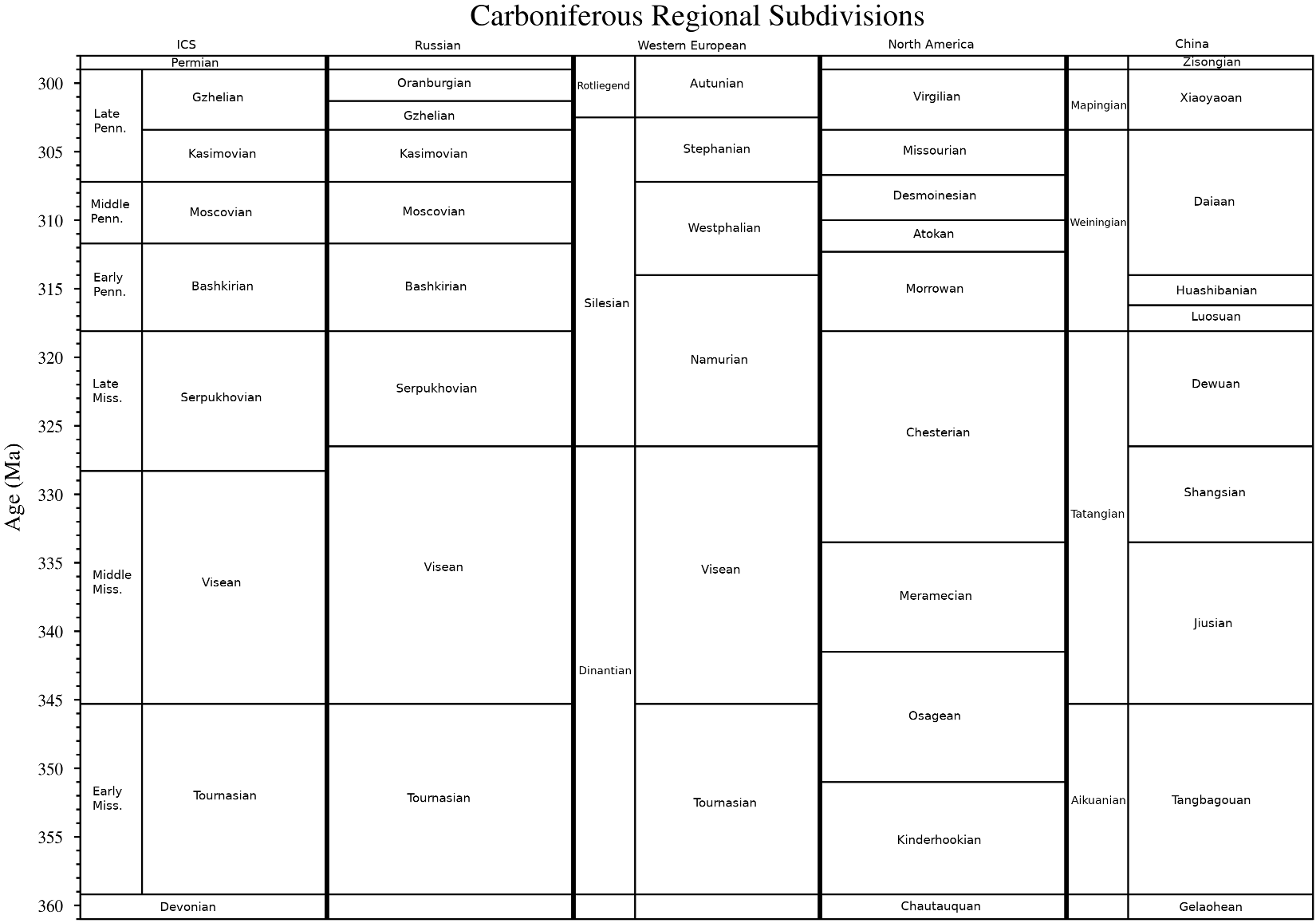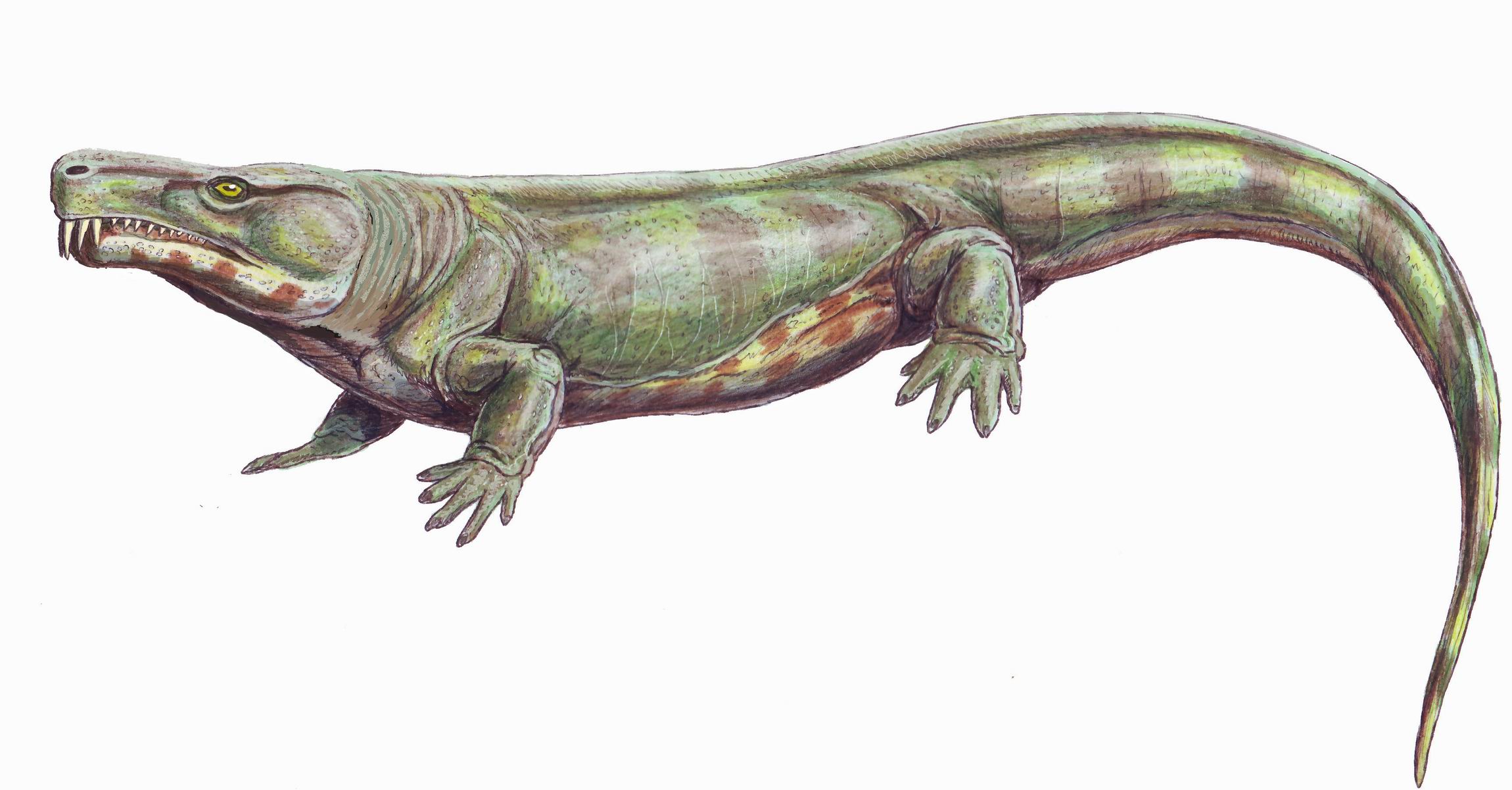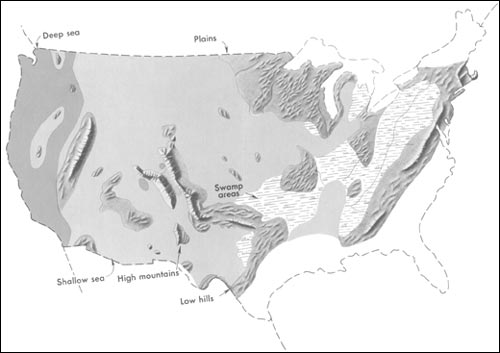|
Captorhinid
Captorhinidae (also known as cotylosaurs) is an extinct family of tetrapods, traditionally considered primitive reptiles, known from the late Carboniferous to the Late Permian. They had a cosmopolitan distribution across Pangea. Description Captorhinids are a clade of small to very large lizard-like reptiles that date from the late Carboniferous through the Permian. Their skulls were much stronger than those of their relatives, the Protorothyrididae, and had teeth that were better able to deal with tough plant material. The postcranial skeleton is very similar to that of advanced reptiliomorph amphibians, so much in fact that the amphibian Seymouriamorpha and Diadectomorpha were thought to be reptiles and grouped together in "Cotylosauria" as the first reptiles in the early 20th century. Captorhinids have broad, robust skulls that are generally triangular in shape when seen in dorsal view. The premaxillae are characteristically downturned. The largest captorhinid, the herbivorou ... [...More Info...] [...Related Items...] OR: [Wikipedia] [Google] [Baidu] |
Captorhinus Kierani
''Captorhinus'' (from el, καπτō , 'to gulp down' and el, ῥῑνός , 'nose') is an extinct genus of captorhinid reptiles that lived during the Permian period. Its remains are known from Oklahoma, Texas, Europe, India, the Pedra de Fogo Formation, Parnaíba Basin, Brazil and the Madumabisa Mudstone, Zambia. Description While there are several forms of ''Captorhinus'', there are three main species that are the best known. The previously mentioned ''Captorhinus aguti'' is the type species of ''Captorhinus'', but there is also a fair amount of material collected on ''Captorhinus magnus'' and ''Captorhinus laticeps''. The most distinguishable trait of ''Captorhinus'' is its namesake: the hooking of the snout from prominent ventral angulation of the premaxillary process. Other notable characteristics include the dorsally positioned alary process of the jugal on the medial surface and flushed with the orbital margin, the retroarticular process longer anteroposteriorly th ... [...More Info...] [...Related Items...] OR: [Wikipedia] [Google] [Baidu] |
Captorhinus
''Captorhinus'' (from el, καπτō , 'to gulp down' and el, ῥῑνός , 'nose') is an extinct genus of captorhinid reptiles that lived during the Permian period. Its remains are known from Oklahoma, Texas, Europe, India, the Pedra de Fogo Formation, Parnaíba Basin, Brazil and the Madumabisa Mudstone, Zambia. Description While there are several forms of ''Captorhinus'', there are three main species that are the best known. The previously mentioned ''Captorhinus aguti'' is the type species of ''Captorhinus'', but there is also a fair amount of material collected on ''Captorhinus magnus'' and ''Captorhinus laticeps''. The most distinguishable trait of ''Captorhinus'' is its namesake: the hooking of the snout from prominent ventral angulation of the premaxillary process. Other notable characteristics include the dorsally positioned alary process of the jugal on the medial surface and flushed with the orbital margin, the retroarticular process longer anteroposteriorl ... [...More Info...] [...Related Items...] OR: [Wikipedia] [Google] [Baidu] |
Concordia Cunninghami
''Euconcordia'' is an extinct genus of Late Carboniferous captorhinid known from Greenwood County, Kansas of the United States. Description ''Euconcordia'' is known from the holotype KUVP 8702a&b, well preserved skull in dorsal view along with its counterpart, a partial preserved braincase in ventral view, and from the referred specimen KUVP 96/95, well preserved skull in ventral view and a poorly preserved dorsal counterpart. It was collected in the Hamilton Quarry, from the Calhouns Shale Formation of the Shawnee Group, dating to the Virgilian stage (or alternatively late Kasimovian to early Gzhelian stage) of the Late Pennsylvanian Series, about 300 million years ago. ''Euconcordia'' was originally thought to be the basalmost known member of Captorhinidae. A novel phylogenic study of primitive reptile relationships by Müller & Reisz in 2006 recovered ''Thuringothyris'' as a sister taxon of the Captorhinidae, and therefore, by definition, ''Thuringothyris'' repres ... [...More Info...] [...Related Items...] OR: [Wikipedia] [Google] [Baidu] |
Labidosaurus
''Labidosaurus'' (from el, λᾰβῐ́δος , 'forceps' and el, σαῦρος , 'lizard') is an extinct genus of reptile from the Permian period of North America. Fossils have been discovered in Texas. It was heavily built, resembling a lizard with a large head, and measuring about long. Unlike many other captorhinids it had a single row of sharp, conical teeth in its jaws, and its dietary habits are assumed to have been omnivorous. A lower jaw of ''Labidosaurus'' was described in 2011 that shows evidence of osteomyelitis, or an infection of the bone. It is the earliest known example of an infection in a land vertebrate. The infection probably developed because the pulp cavity of a broken dentary tooth was exposed to bacteria Bacteria (; singular: bacterium) are ubiquitous, mostly free-living organisms often consisting of one biological cell. They constitute a large domain of prokaryotic microorganisms. Typically a few micrometres in length, bacteria were among .. ... [...More Info...] [...Related Items...] OR: [Wikipedia] [Google] [Baidu] |
Carboniferous
The Carboniferous ( ) is a geologic period and system of the Paleozoic that spans 60 million years from the end of the Devonian Period million years ago (Mya), to the beginning of the Permian Period, million years ago. The name ''Carboniferous'' means "coal-bearing", from the Latin '' carbō'' (" coal") and '' ferō'' ("bear, carry"), and refers to the many coal beds formed globally during that time. The first of the modern 'system' names, it was coined by geologists William Conybeare and William Phillips in 1822, based on a study of the British rock succession. The Carboniferous is often treated in North America as two geological periods, the earlier Mississippian and the later Pennsylvanian. Terrestrial animal life was well established by the Carboniferous Period. Tetrapods (four limbed vertebrates), which had originated from lobe-finned fish during the preceding Devonian, became pentadactylous in and diversified during the Carboniferous, including early amphibian lin ... [...More Info...] [...Related Items...] OR: [Wikipedia] [Google] [Baidu] |
Thuringothyris
''Thuringothyris'' is an extinct genus of Early Permian eureptiles known from the Thuringian Forest in central Germany. Description ''Thuringothyris'' is known from the holotype MNG 7729, articulated well-preserved skull and partial postcranial skeleton, and from the referred specimens MNG 10652, poorly preserved skull and partial vertebral column, MNG 10647, disarticulated cranial and postcranial remains of at least four individuals, MNG 10183, slightly crushed skull and partial postcranial skeleton and MNG 11191, poorly preserved skull and partial limbs. All specimens were collected from the Tambach-Sandstein Member, the uppermost part of the Tambach Formation, dating to the Artinskian stage of the Late Cisuralian Series (or alternatively upper Rotliegend), about 284–279.5 million years ago. They were found in the Bromacker Quarry, the middle part of the Thuringian Forest, near the small town of Tambach-Dietharz. ''Thuringothyris'' was orig ... [...More Info...] [...Related Items...] OR: [Wikipedia] [Google] [Baidu] |
Protorothyrididae
Protorothyrididae is an extinct family of small, lizard-like reptiles belonging to Eureptilia. Their skulls did not have fenestrae, like the more derived diapsids. Protorothyridids lived from the Late Carboniferous to Early Permian periods, in what is now North America. Many genera of primitive reptiles were thought to be protorothyridids. ''Brouffia'', '' Coelostegus'', '' Paleothyris'' and '' Hylonomus'', for example, were found to be more basal eureptiles in Muller and Reisz (2006), making the family as historically defined paraphyletic, though three genera, '' Protorothyris, Anthracodromeus,'' and '' Cephalerpeton'', were recovered as a monophyletic group. ''Anthracodromeus'', ''Paleothyris'', and ''Protorothyris w''e recovered as a monophyletic group in Ford and Benson (2020) (who did not sample ''Cephalerpeton''), who recovered them as more derived than captorhinids and ''Hylonomus'', but less so than araeoscelidians. ''Anthracodromeus'' is the earliest known reptile ... [...More Info...] [...Related Items...] OR: [Wikipedia] [Google] [Baidu] |
Diadectomorpha
Diadectomorpha is a clade of large tetrapods that lived in Euramerica during the Carboniferous and Early Permian periods and in Asia during Late Permian (Wuchiapingian), They have typically been classified as advanced reptiliomorphs (transitional between "amphibians" ''sensu lato'' and amniotes) positioned close to, but outside of the clade Amniota, though some recent research has recovered them as the sister group to the traditional Synapsida within Amniota, based on inner ear anatomy and cladistic analyses. They include both large (up to 2 meters long) carnivorous and even larger (to 3 meters) herbivorous forms, some semi-aquatic and others fully terrestrial. The diadectomorphs seem to have originated during late Mississippian times, although they only became common after the Carboniferous rainforest collapse and flourished during the Late Pennsylvanian and Early Permian periods. Anatomy Diadectomorphs possessed both amphibian-like and amniote-like characteristics. Originall ... [...More Info...] [...Related Items...] OR: [Wikipedia] [Google] [Baidu] |
Pennsylvanian (geology)
The Pennsylvanian ( , also known as Upper Carboniferous or Late Carboniferous) is, in the ICS geologic timescale, the younger of two subperiods (or upper of two subsystems) of the Carboniferous Period. It lasted from roughly . As with most other geochronologic units, the rock beds that define the Pennsylvanian are well identified, but the exact date of the start and end are uncertain by a few hundred thousand years. The Pennsylvanian is named after the U.S. state of Pennsylvania, where the coal-productive beds of this age are widespread. The division between Pennsylvanian and Mississippian comes from North American stratigraphy. In North America, where the early Carboniferous beds are primarily marine limestones, the Pennsylvanian was in the past treated as a full-fledged geologic period between the Mississippian and the Permian. In parts of Europe, the Mississippian and Pennsylvanian are one more-or-less continuous sequence of lowland continental deposits and are grouped ... [...More Info...] [...Related Items...] OR: [Wikipedia] [Google] [Baidu] |
Seymouriamorpha
Seymouriamorpha were a small but widespread group of limbed vertebrates (tetrapods). They have long been considered reptiliomorphs, and most paleontologists may still accept this point of view, but some analyses suggest that seymouriamorphs are stem-tetrapods (not more closely related to Amniota than to Lissamphibia). Many seymouriamorphs were terrestrial or semi-aquatic. However, aquatic larvae bearing external gills and grooves from the lateral line system have been found, making them unquestionably amphibians. The adults were terrestrial. They ranged from lizard-sized creatures (30 centimeters) to crocodile-sized 150 centimeter long animals. They were reptile-like. If seymouriamorphs are reptiliomorphs, they were the distant relatives of amniotes. Seymouriamorphs form into three main groups, Kotlassiidae, Discosauriscidae, and Seymouriidae, a group that includes the best known genus, '' Seymouria''. The last seymouriamorph became extinct by the end of the Permian. Taxo ... [...More Info...] [...Related Items...] OR: [Wikipedia] [Google] [Baidu] |
Reptiles
Reptiles, as most commonly defined are the animals in the class Reptilia ( ), a paraphyletic grouping comprising all sauropsids except birds. Living reptiles comprise turtles, crocodilians, squamates (lizards and snakes) and rhynchocephalians ( tuatara). As of March 2022, the Reptile Database includes about 11,700 species. In the traditional Linnaean classification system, birds are considered a separate class to reptiles. However, crocodilians are more closely related to birds than they are to other living reptiles, and so modern cladistic classification systems include birds within Reptilia, redefining the term as a clade. Other cladistic definitions abandon the term reptile altogether in favor of the clade Sauropsida, which refers to all amniotes more closely related to modern reptiles than to mammals. The study of the traditional reptile orders, historically combined with that of modern amphibians, is called herpetology. The earliest known proto-reptiles originat ... [...More Info...] [...Related Items...] OR: [Wikipedia] [Google] [Baidu] |
Primitive (phylogenetics)
In phylogenetics, a primitive (or ancestral) character, trait, or feature of a lineage or taxon is one that is inherited from the common ancestor of a clade (or clade group) and has undergone little change since. Conversely, a trait that appears ''within'' the clade group (that is, is present in any subgroup within the clade but not all) is called advanced or derived. A clade is a group of organisms that consists of a common ancestor and all its lineal descendants. A primitive trait is the original condition of that trait in the common ancestor; advanced indicates a notable change from the original condition. These terms in biology contain no judgement about the sophistication, superiority, value or adaptiveness of the named trait. "Primitive" in biology means only that the character appeared first in the common ancestor of a clade group and has been passed on largely intact to more recent members of the clade. "Advanced" means the character has evolved within a later subgrou ... [...More Info...] [...Related Items...] OR: [Wikipedia] [Google] [Baidu] |





